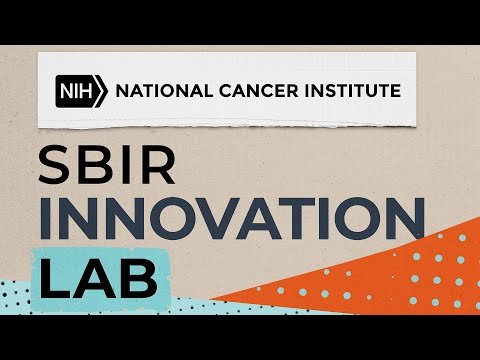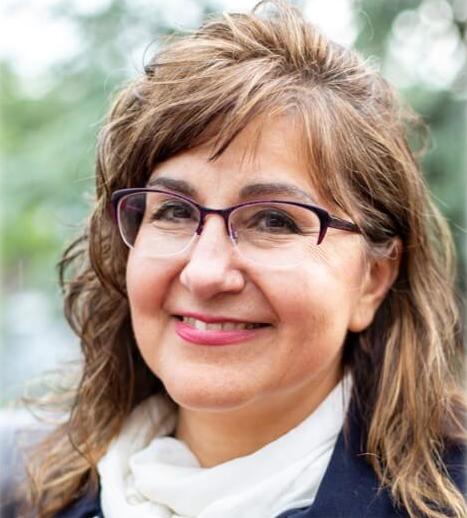Listen
Listen on the YouTube channel.
Podcast Guest Speakers:
William Bozza, Ph.D.
William Bozza, Ph.D. serves as a Program Director, managing a portfolio of oncology startups (SBIR & STTR awardees) to facilitate small businesses in technology commercialization for cancer diagnosis and treatment. Dr. Bozza is currently leading the center’s efforts on the Small Business Concept Award for early-stage high-risk/high-reward technologies that target rare and pediatric cancers. He is also taking the lead on the program’s Peer Learning and Networking Webinar Series to help SBIR companies learn from peers and facilitate collaboration.
Sid Selvaraj, Ph.D.
Sid Selvaraj, Ph.D. is the CEO at Arima Genomics. Dr. Selvaraj received his Ph.D. in Bioinformatics from University of California San Diego. As a graduate student, he used genomic assays and NGS to study the impact of genetic sequence and structure on human health and disease. Dr. Selvaraj's scientific contributions have been published as several manuscripts in Nature and Nature Biotechnology. Dr. Selvaraj has also worked as a software engineer at Carevoyant Technologies, where they used Dexterity, Crystal Reports, MySQL, and MSSQL to build patient-information, medical-record workflows to manage care.
Manijeh Goldberg, Ph.D., M.B.A.
Manijeh Goldberg, Ph.D., M.B.A. is the founder and CEO of Privo. She has over 20 years of experience in the biomedical industry, in large companies and five startups. She has developed US Key Opinion Leader (KOL) relationships, successfully lobbied to get PRV111 into a large, NIH-funded clinical study, planned and executed training, and helped drive on-time trial enrollment. Additionally, Dr. Goldberg is driving the execution of a second-generation Privo’s products. Her current focus is to conduct clinical trials, get PRV111’s second-generation products through the FDA, and explore initiating a second US clinical trial. Additional responsibilities include business development, general management, and driving the overall success of Privo’s research and products. Dr. Goldberg holds a Ph.D. in Biomedical Engineering, an M.S. in Health Sciences and Technology from Harvard Medical School, an M.B.A. from MIT Sloan School of Management, and an M.S. in Computer Science and Mathematics.
Programs Mentioned in Episode
Episode Transcript
BILLY BOZZA: Hello and welcome to Innovation Lab, your go to resource for all things biotech startups, brought to you by the National Cancer Institute’s Small Business Innovation Research, SBIR Development Center. Our podcast hosts interviews with successful entrepreneurs and provides resources for small businesses looking to take their cutting-edge cancer solutions from lab to market. I'm Billy Bozza, a program director at NCI SBIR and today's host.
In this episode, you will hear advice on how to write a strong commercialization plan from a diagnostics company and a therapeutics company funded through the NCI SBIR program. The first company, Arima Genomics, will provide insights on addressing market, customers and competition, as well as important considerations for diagnostic startups. The second company, Privo Technologies, will cover production and marketing plans, commercialization plan resources, and specific considerations for therapeutic startups. To get us started, here's Sid Selvaraj, CEO of Arima Genomics.
SID SELVARAJ: Hey, folks. My name is Sid. I’m with a company called Arima Genomics. We are actually based in San Diego, US. And we are a tools and a diagnostic company, in particular, we work in the area of cancer diagnostics, mostly late stage cancers. SBIR has been -- they have been instrumental to fund us, to help us build our strategy, product pipeline, and so on and so forth. And so, I'm, you know, as part of the community, I owe it back to the SBIR community. And here's my notes about how to write these grants. And if these are useful, please share with other folks. And you know, this is part of a small community, so we want to just help each other.
All right. So, in my 10 minutes, I'm going to focus on how do we write a commercialization plan? So these are typically part of Phase 2 and Phase 2 grants. Now, we have obtained a few of these Phase 2 grants and so pretty much all of my feedback comes from writing and rewriting those grants. My focus is – I’ll try to be a little bit more broader, because I believe, you know, if you look at all types of investors, whether it's NIH or, you know, financial investors or strategic investors, there is a few things that are common that people want to look at.
And so, one of those common things is if you can narrow those common things, then you can apply for different types of investors. Because you would need multiple types of investors in your journey as an entrepreneur. And so, what are these common items? Right? I think the first thing is what is the unmet need? You know, often people don't know the difference between a want and a need. The way I try to define a need is if something, somebody will act upon, you know, it could be writing a check or calling somebody or writing a paper or doing a conference call or, you know, they need to act upon.
And so, a pain point that is really bothering a customer. It could be a patient, it could be a researcher, it could be, you know, a clinical trials person, whoever this customer is, they need to have a very big need that they will act upon. So, that's like the first piece.
The second piece is there needs to be a lot of these customers, so basically a larger market opportunity. And the key thing is to look at the product of customers and their usage. So, that's this kind of product that is what we call is the market size. So, that's the second thing.
The third thing is where does value reside? I'd say, you know, if you look at the healthcare ecosystem, there could be many, many customer types. A researcher is a customer type, a physician is a customer type, a lab is a customer type, a biopharma is a customer type. Even within biopharma, there's like researchers and clinical trials and commercial and there’s like a lot of customer types. Now, which of these customer types would be willing to pay you a dollar amount where, if you add all your costs from material costs to marketing costs, sales costs, financial costs, admin costs, all of it, and then if you subtract from what the customer type is willing to pay, do you make sufficient margin?
And what you'll realize is different customer types might be willing to pay different dollar values, because they're all constrained on a lot of factors. Like, for example, you know, if you're selling stuff to a lab, that one's a diagnostic test, the lab is being constrained by how much they get reimbursed. So, they have a cap on that, right. So, they have to make sure their costs should be underneath those caps. And so, every customer type has a constraint, different types of constraints.
And so, you need to understand which customer type can provide you a price that makes business sense to your costs. And then what kind of a product or a service does our customer type want, and can you offer that? So, it's understanding where the value resides in your chain of factories or your customer among the different ecosystem customer types, so that's a very, very important piece.
The other thing is what we call a strategy and strategy is a very, very difficult idea. The concept is, you know, let's assume you understood who your customer is, who your marketer is your, you understood where the values resides. What set of activities do you want to do to get to that value in a timely fashion, in a constructive way as the strategy? And trust me, strategy is very, very challenging to build. And so, and all these things take a lot of time to figure out. And so, a part of this entrepreneur journey is trying to understand these things. And at last, execution is very, very hard.
You know, like, entrepreneur requires a lot of patience and a lot of hard work to get to where he or she wants to go to. So, in my opinion, these are the five things that are really common. And once you're able to articulate these five things, then you could really be attractive to different types of investors, including that edge. And so that's why I think from big picture, right. So, let's go a little bit deeper.
How do you build these things? You know, do you understand how much your customer is willing to pay, where does value reside? Let's just try, how do you build a strategy? The feedback is talk to customers, a lot of them, again and again and again. Because the pattern emerges after you talk to a lot of people. Because the first time you talk to somebody, what they say may not be really close to the actual truth of what you want to go, but as you talk to more and more people, then, you know, you kind of see the pattern. It's just like if you toss a coin 10 times, the expectation of five heads and five tails may not happen, right, because the end is so small. But once you get to a large end, 100, maybe 150, 200 then it gets very close to 50-50.
And so that's why it's all about more and repeat. And, you know, document these conversations. And if you have not, please, please do the I-Corps program. This is one way to really force you to talk to many customers. Talk to your investors. Investors are another important piece of the ecosystem, and so, talk to them, don't expect a check from them right away, it takes them a while to build trust, but get their feedback, they will tell you what is missing. Good investors will tell you what is missing. And so that's another critical piece. Talk to other CEOs and founders and, you know, they will give you a very different perspective, also.
I think the bottom line is all these conversations will help you to build a hypothesis regarding the various, you know, questions we put forward into your [inaudible], if that’s like pain points or market size or value or strategy. And once you have this hypothesis, you can refine the hypothesis. And the refined hypothesis eventually becomes your own story. And even if you think you have all of them covered, still go and refine them, talk to more people. It takes a long time to really build conferencing history.
Other notes. You know, try to, you know, rather than feeding a technology into a pain point, always focus on the pain point. Because at the end of the day, people don't care about the technology. People don't care about, you know, the form of your technology. It's really the pain point. The larger the pain point, the lesser the criticality of other factors. Also, focus on your health. It's a worthwhile journey, but it's going to be challenging, so focus on that too.
OK, really specific considerations for diagnostic. The biggest consideration is in a diagnostic company, after showing demand, that the customer is willing to pay for it and use it. And that demand is a very, very critical piece. What that means is you have to understand how to get reimbursed, how does the regulatory framework work? And so, this means that to get to data and demand, you have to, you will need a lot of time. And so, you need some way to buy time. What do I mean by buy time? Well, you have to run a company in which you have to pay your employees and so on and so forth. And investor money is very, very expensive, so it's not the best way to buy time.
And grant opportunity is one good way to buy time, another good way is to get some revenue. So you could, you know, like the Amazon story where they focused on a niche, the book markets got the revenue, but it also built credibility and they optimized product, and so on and so forth, right. So, focus on a niche that you could access without a lot of complexity and make some brevity, make some credibility. And then go to your difficult market that way you have some revenue, you will buy time. And so, I think that's my single most important consideration is that diagnostic companies take longer, so keep the time as a key consideration.
All right. So, let's talk about, you know, some sections of your commercial plan. There’s two sections we focus here: company overview and customer competition. I mean, given what we spoke of in the past few minutes, this should be pretty. Straightforward. The only thing that I wanted to raise is regarding competition. You know, the commercial space is very, very cutthroat. And then there's a competition who is much more well-funded and more experienced, has way more resources. Why would they come after your market or your product or service?
And so, that's something that will be a key thing for you to think about. IP is one aspect of it. It's necessary but may not be often sufficient, because if you're a small company and if you want to, if a large company infringes on your IP, I mean, do you have the financial ability to fight them up, right? So, there are other ways to, I guess, build hurdles for them to get to you. So that's why I would look at example by Southwest. You know, at the time when Southwest came, there were large airlines like American and Delta. And they were doing what is called kind of a full-service airplane. Southwest came in and said, well, we're going to be point to point where we're going to use only one type of airplane that goes from, you know, it connects two cities that are within like, you know, one to two hour flying range and we're going to stop only for 15 minutes, 15 to 20 minutes, so that people can go really quickly. There's no real kind of first class, second class, or economy class in our airplane.
So, it's kind of, it's really the whole execution is optimized to achieve this point-to-point service. But importantly, it really created a hard time for somebody like Delta to actually follow [unclear]. So, because they could not take away, they had already, for example, you know, trained their customers to go after economy, first class, or business class. And so, it was very hard for them to remove the classes right? And so, basically, they created hurdles, not just one, like, a series of hurdles that made it really hard for competition to catch up.
I think if you can think about both IP, but also hurdles, and I think that combination will be -- it's one proper way. Alright, folks, that’s all I want to talk about. My name is Sid, again. And if you found this useful, please feel free to share it with other people and good luck with your startup and again, please take care of your health and good luck. Thank you.
BILLY BOZZA: Thanks for the insights, Sid. Now let's hear from Manijeh Goldberg, CEO of Privo Technologies.
MANIJEH GOLDBERG: Today, I'd like to share some of my experiences regarding writing an impactful commercialization plan, which I refer to as CP. Your team of employees and network of experts are the key to developing a strong commercialization plan. Significant research is required for this and your team needs to be prepared in advance.
You need to consult with key opinion leaders, KOL’s, to understand the unmet medical need that you are going after and how your product can clinically be beneficial to patients. Reach out to contract development and manufacturing organizations, known as CDMO'S, and also, contact research organizations regarding clinical trials. You need to speak with them, provide them with documents that they need after a CDA in place in order to get estimates on what it takes to conduct, scale up manufacturing, and clinical trials.
You need regulatory experts to provide guidance on FDA requirements. You need to understand who the end user of your product will be and how it will be reimbursed. You don't need to have all the answers right now, but you need to show the reviewer that you are aware of them and you have a plan to get answers.
We usually work on a grant two to three months in advance since it takes time to conduct research on publicly available medical and marketing data and reach to the experts, that I mentioned earlier. Read the grant application, the RFA, carefully. There are important requirements specified in the RFA. Then recognize the strength and weaknesses of your plan. Be very transparent with your team and let them help you understand what are the things that are missing from your product or from your team.
Set up meetings with experts to better understand complex areas such as conducting clinical trials and GMP manufacturing. Reach out to CRO's and CDMO’s, I mentioned earlier. This information should be included in your CP. Create a storyboard or a flow diagram to show the path to commercialization, at least early commercialization.
Developing the plan is challenging and we developed the storyboard to describe the big picture of our plan. You need to provide support letters from KOL's and investors. KOL’s should be your champions for commercialization. GMP manufacturing is very resource intensive. Be aware of upfront costs, technical and logistic challenges to scale up. Unless you find a partner, such as a large pharma, to take on the FDA and GMP manufacturing requirements, you would have to deal with many requirements from FDA and you have to learn how to document and submit these to your IMD, if you are a therapeutic drug.
Important information that needs to be included for your production and marketing plan. As I mentioned, it's very important to know about your scale up and your GMP manufacturing and CMC requirements. You need to give confidence that either you have figured out the scale up or the CDMO that you are reaching out knows how to scale up. And you need to explain it in a pretty concise manner, in a short paragraph.
As for marketing plan, study the pricing and the marketing approach of a product that's approved, which is in your space, use their pricing and reimbursement model to give an estimate of how your product might be received in the market and how it can be priced and reimbursed. Reach out to your business-minded advisors and ask them for a redacted example of their marketing plan. It really helps to have a template or an example.
When you write your plan, document and communicate with the reviewers what your product is and how this helps with an unmet medical need. Be very clear so they understand and can provide you meaningful data. I found that the reviewers with industry background can be very helpful. With that, I hope this is helpful and it's a good start, I believe, for your commercialization plan.
BILLY BOZZA: Thanks to Sid and Manijeh for sharing some key takeaways for putting together a strong commercialization plan. As always, don't forget to check our website, sbir.cancer.gov, for the latest funding opportunities and commercialization resources to support your journey from lab to market.
This was Billy Bozza from NCI SBIR. Please join us again for the next installment of NCI SBIR Innovation Lab. And subscribe today wherever you listen. If you have questions about cancer or comments about this podcast, e-mail us at nciinfo@nih.gov or call us at 800-422-6237, and please be sure to mention Innovation Lab in your query.
We are a production of the U.S. Department of Health and Human Services, National Institutes of Health, National Cancer Institute. Thanks for listening.



